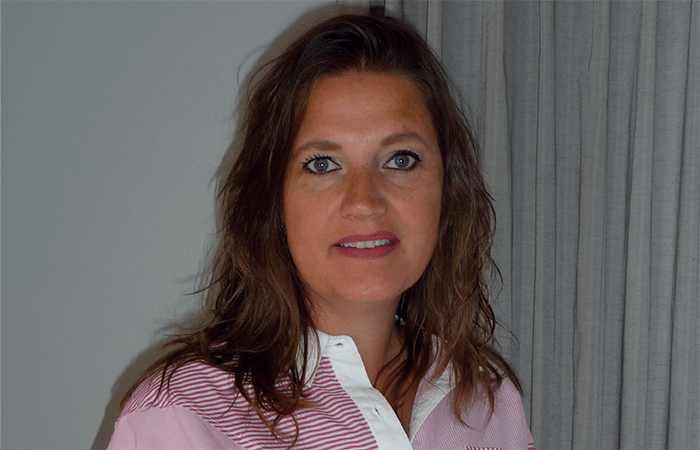Supercritical fluid chromatography (SFC) is perceived as “green” in comparison to other chromatography methods: it makes use of available, non-toxic carbon dioxide, lowers energy consumption, and generates less waste than traditional chromatography approaches. Furthermore, separation speed is significantly higher in SFC, and the technology offers orthogonal selectivities, combined with high robustness and reproducibility. With increasing industry demands to enhance sustainability across all disciplines, I (and others in the field) expected the popularity of SFC to increase such that it would become standard in many analytical labs. Unfortunately, this hasn’t happened.
My colleague Caroline West recently discussed the lack of development in SFC instrumentation over the past decade – despite our overall understanding of the technique having improved by quite some margin. She attributed the resistance primarily to people not wanting to learn a new technique or invest in a new instrument. This is a fair comment. But, in my position as a consultant working across various industries, I’m beginning to see some encouraging signs – especially where large-scale chromatography is concerned.
An increasing number of companies are looking for greener solutions, and there simply aren’t many other practicable solutions on the market. By using carbon dioxide, we can access high pressures – even up to 800 bars – which opens up many different types of compounds for separation, and similarly for extraction. Furthermore, 60 cm (or even larger) columns are now available for large-scale SFC systems, which has opened up many new opportunities for purification. For example, KD Pharma uses multiple SFC systems in their facility to successfully purify omega 3 and omega 6 products.
As a highly regulated industry, pharma is reluctant to adopt SFC – as it is with any new system. But the COVID-19 pandemic has begun to change things, certainly for large scale purification – with companies involved in vaccine development realizing that the large amounts of purified lipids required for vaccine encapsulation necessitate a rethink to reduce costs. Compared to large-scale normal-phase LC purification, the process mass intensity (PMI) of SFC is significantly lower because CO2 recycling is easily obtained, and purified compounds are collected in smaller volumes of solvent, which reduces solvent evaporation as well as waste disposal. In addition, ATEX requirements for a facility utilizing pure CO2 or CO2 combined with a low co-solvent percentages are more attractive from a cost saving perspective.
There is, however, a long way to go. Even pharmaceutical companies that have adopted SFC for discovery are often still mitigating to take SFC to the development stage and revert back to the synthesis route, but SFC can be profitable enough to balance this for intermediates production, or even finished products. But there are many other interesting extraction applications utilizing supercritical (or subcritical) CO2 currently being considered at very large scale. Many revolve around recycling and valorizing waste streams but all by applying a sustainable footprint.
Polymer producing companies will soon be required by government regulations to use recycling sources for most of their products. With successful alternatives available, there is no need to waste huge quantities of water for dyeing clothes when the same results can be obtained by using carbon dioxide. Another advantage in SFE is the fact that the raffinate is dry when pure CO2 is applied, which facilitates waste disposal or further raffinate upcycling.
One industry in particular that appears more open to adopting SFC and supercritical fluid extraction (SFE) is medical cannabis These are often start-up companies, and they start from scratch, with sizable budgets. I often talk to CEOs of start-up cannabis companies who aren’t sure on what exactly they’re required to do on the extraction and potentially separation front. But they lack the preconceived notions about SFC and its rivals that you see in other industries, which means they’re often more open to greener and cost-effective approaches.
Despite the improved sustainability of the approach, the clincher for most companies across these various industries is often capital cost. The systems cost more at initial purchase compared to liquid alternatives, but this is quickly recouped through reduced operational costs. This needs to be addressed in the business case, the total-cost-of-ownership is significantly more profitable at the large scale for SFE and SFC.
Over the past 5–6 years, I’ve found it increasingly easy to convince people that SFC is more cost effective, in many cases, than traditional chromatography approaches. At Thar Process, projects often start with R&D trials, where you can make calculations; it’s black and white. This wasn’t always the case for large-scale SFC – indeed, large scale SFC systems haven’t always been available. As the message begins to filter down, I expect the number of companies adopting both SFE as well as SFC to increase.
I would also say that a lack of knowledge is holding adoption back in some areas, so education is of utmost importance. There is a misconception that SFC cannot match the benefits of HPLC, for example. And many simply aren’t aware of the possibilities of using carbon dioxide; for example, as a recycled product, carbon dioxide can valorize waste products, which removes toxic and environmentally harmful chemicals from the process. Those more familiar with SFC may know that it eliminates the use of toxic solvents and reduces energy consumption and waste. But do they know that it can also simplify post-extraction or post-purification workflows? Do they know it can reduce operation costs in the long run?
As Caroline said, when considering analytical-scale SFC, we do need further developments on the instrument side. There were several new developments around a decade ago, but, since then, vendors have largely stopped improving SFC instruments. Today, I can only see one of those 2012–2014 SFC pioneers continuing in this area.
The recent increase in interest for large-scale chromatography applications is encouraging. But as a true SFC fan, I’d like to see many more users open their minds to SFC!





